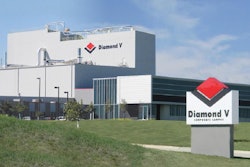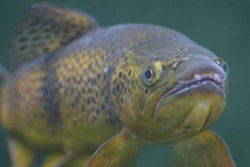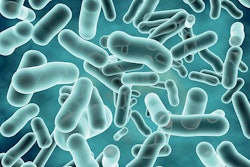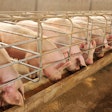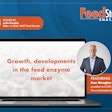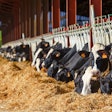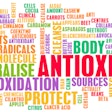
Find out more about the alternatives to typical protein sources in animal and aquafeeds
Beyond the traditional proteins used in animal feed, several alternative protein sources are increasingly being used around the world — a trend driven by sustainability, availability and cost.
“It seems clear that, to meet future demands, alternative protein sources for both direct human consumption and as farm animal feed are going to be required,” according to a study on insect protein in The Journal of Nutrition, published in April 2019.
Here, we will examine several alternative proteins that can be used in animal feed.
Find out more about alternative proteins in the February issue of Feed Strategy.
Insects
Insects can be used in a variety of forms in animal feed, including whole dried insect, processed meal and oil, and further processed products such as hydrolyzed proteins. The most common form of insect product used in animal feed is the high-protein insect meal, which is created by mechanically pressing the whole larvae and extracting the oil, according to Liz Koutsos, president and CEO of EnviroFlight, which manufactures animal feed using black soldier fly larvae.
Koutsos said there are many benefits and few drawbacks to using insect protein in animal feed.
“Insects have short life cycles, are very efficient at nutrient utilization, and do so in a very small space, so we can produce a lot of sustainable protein on a small footprint as compared to more traditional plant and animal protein production systems,” she said. “As the world population continues to grow, this will become very important in order to feed the human population.”
The main challenge to the insect protein industry, she said, is that it is relatively new and therefore has high costs associated with production and development.
“New equipment is being designed and manufactured and R&D is being conducted to demonstrate safety and efficacy; these are fundamental, but costly, parts of developing a new industry,” she said.
Koutsos said that, once the industry moves beyond the initial startup phase, it will become cost effective.
“Insects grow fast compared to other protein sources, they are efficient with feed conversion and most of them grow on food waste and byproduct. These attributes position insect-derived ingredients as a very cost-effective feed and food source in the future,” she said.
The use of insect protein in feed and food, though, faces regulatory hurdles.
“Safety must be demonstrated in order to gain regulatory approval in the U.S.,” Koutsos said. “This process is well underway with black soldier fly, and crickets and mealworms aren’t far behind. Right now, black soldier fly larvae and meal are approved for poultry and salmonid feed, and petitions for additional species and for oil are under review.”
In the EU, the use of insect proteins originating from certain insect species is authorized for aquafeed. The European Commission is exploring the possibility of revising rules to authorize insect proteins for poultry feed.
Yeast derivatives
According to Jerry Shurson, professor in the department of animal science at the University of Minnesota, there are numerous yeast products and yeast-containing feed ingredients that are commercially produced, marketed and used extensively in animal feeds around the world.
“Considerable research has been conducted to evaluate the potential animal growth performance and health benefits of adding yeast, yeast derivatives and yeast-containing ingredients into animal feeds,” he said.
This includes active dry yeasts, which are used in probiotic products; nutritional yeasts, which are used as supplements in animal feed due to their relatively high protein and amino acid, energy and micronutrient content compared with more common feed ingredients; and other yeast-based products that contain nutraceutical compounds present in yeast cells and cell walls that have generally been shown to improve animal growth performance and health.
Other specialty yeast products, Shurson said, have specific applications in some animal feeds, such as Phaffia rhodozyma yeast, which contains pigment that improves flesh color in salmon and trout.
The nutritional and health benefits of yeast-based products have led to their increased use as alternative supplements in animal feed as a result of restrictions on antimicrobial growth promoters.
“However, their mode of action has not been well defined in order to identify appropriate conditions to use them strategically and optimize growth and health responses,” Shurson said. “Furthermore, it is difficult for nutritionists to differentiate the characteristics, composition and optimal feeding applications among the diverse number of yeast-containing products available. Most of these products contain combinations of probiotics and nutraceutical compounds with different modes of action, making it difficult to determine which compounds contribute to specific responses observed.”
Single-cell bacterial protein
Danish biotechnology company Unibio Group is one company that produces single-cell bacterial protein for use in animal feed. Its product, called Uniprotein, can be used as a protein ingredient as a sustainable alternative to conventional protein ingredients.
According to Ina Karlshøj Julegaard, commercial animal nutritionist at Unibio, “studies in single-cell protein have shown that it can improve performance and health of the animal. Furthermore, the production of Uniprotein is a non-volatile process and can thus secure a stable protein supply.”
However, he said, Uniprotein has one main drawback: “The protein content is really high (72% in the dry matter), so for some animal species only small amounts can be used.”
Unibio CEO Henrik Busch-Larsen said Uniprotein is cost effective for use in animal feed and it can increase sustainability.
“Using a non-GMO and organic single-cell protein such as Uniprotein in animal feed is cost effective when substituting other types of protein such as non-GMO soy concentrates and prime fishmeal,” Busch-Larsen said. “Using a non-land-based source of protein lessen the stress on the agricultural system. The effect of using industrial produced proteins in feed or food products could pave the way towards a more sustainable future.”
Pea protein
Pea protein can be used in animal and aquafeeds to replace more expensive ingredients.
According to Bob Thaler, professor in the Department of Animal Science at South Dakota State University, pea protein is relatively high in lysine, the first limiting amino acid in most swine diets, and also has a favorable essential amino acid balance.
“There are no ‘anti-nutritional factors’ associated with pea protein, so it can be used in any livestock diet where it makes nutritional and economic sense,” he said. “Depending on the species, pea protein can be the main protein/amino acid source used, or it can compliment other protein/amino acid sources very well.”
The benefits of using pea protein in animal diets include that it is very sustainable, has consistent nutrient levels, can be pelleted, and that it can be used to feed various species, including pigs, poultry and shrimp. Drawbacks include its low levels of sulfur-containing amino acids and that it can be costly.
“Typically, ingredients used in human nutrition are too expensive for use in livestock rations,” he said. “However, it depends on the phase of production and which ingredients it’s competing against. It is still an economic replacement in nursery diets for more expensive ingredients like high-quality fishmeal, plasma protein, specialty soy products. If pea protein is competing against soybean meal as just an protein/amino acid source, it becomes too expensive in today’s market. However, as 2019 has taught us, markets and prices can change, so watch for opportunities for pea protein to fit into diets to save money.”
Algae
Microalgae and macroalgae have also been studied as alternative feed ingredients.
Microalgae have high protein content (20-70%) when compared with corn (10%) and soybeans (40%), are a good source of lipids and carbohydrates, and are highly digestible by non-ruminant animals, according to a WATTAgNet report.
“Microalgae are single cell proteins, so they should be less digestible than soybeans or conventional proteins,” Xingen Lei, Cornell University professor of molecular nutrition, told WATTAgNet in 2016. “But we found in our research that the digestion is the same if not better.”
According to Lei’s research, “Dual potential of microalgae as a sustainable biofuel feedstock and animal feed,” pigs fed a diet supplemented with 10% to 15% microalgae had the same body lean yield as pigs that were fed a conventional diet of corn and soybean meal.
Broilers fed 10% microalgae on an as-fed basis had similar weight gains as those fed a conventional diet. Layers showed similar production rate and egg weight. The biggest difference was that the egg yolks had 24% less cholesterol when the layers were fed a diet supplemented with 10% microalgae.
Another study, published in the journal Foods in 2018, also found no quality issues with meat from broilers fed diets that partially replaced soybean meal with alternative protein sources including microalgae.
For this experiment, microalga or a meal of defatted black solider fly larvae were included in broiler starter and grower feed as a replacement for 50% of the soy protein.
According to a report, “The test and control diets — balanced for amino acids — were fed ad lib to male broilers from day-old to 35 days of age, when they were slaughtered. The researchers monitored a range of standard slaughterhouse parameters, as well as studying the effects on the physical and sensory quality of the meat after three- and seven-day storage under highly oxygenated modified atmosphere packaging (HiOx MAP).
“No significant differences in any of the parameters measured were detected between the meats from birds fed the insect protein and the soy-based control. The only observation noted was a more intense flavor for the fly meal-fed birds, but this difference declined over storage time.
“The meat from the chickens fed the algal protein was a darker, red-yellow color than for those fed the control diet.”
The researchers concluded that algal and insect meals have the potential to replace soybean meal in broiler diets without adversely impacting the quality of the meat.
Macroalgae can be used as a feed additive to boost immunity. The “specific polysaccharides found in macroalgae are used in toxin binders for their ability to mitigate the negative effects of toxins in feeds.”


